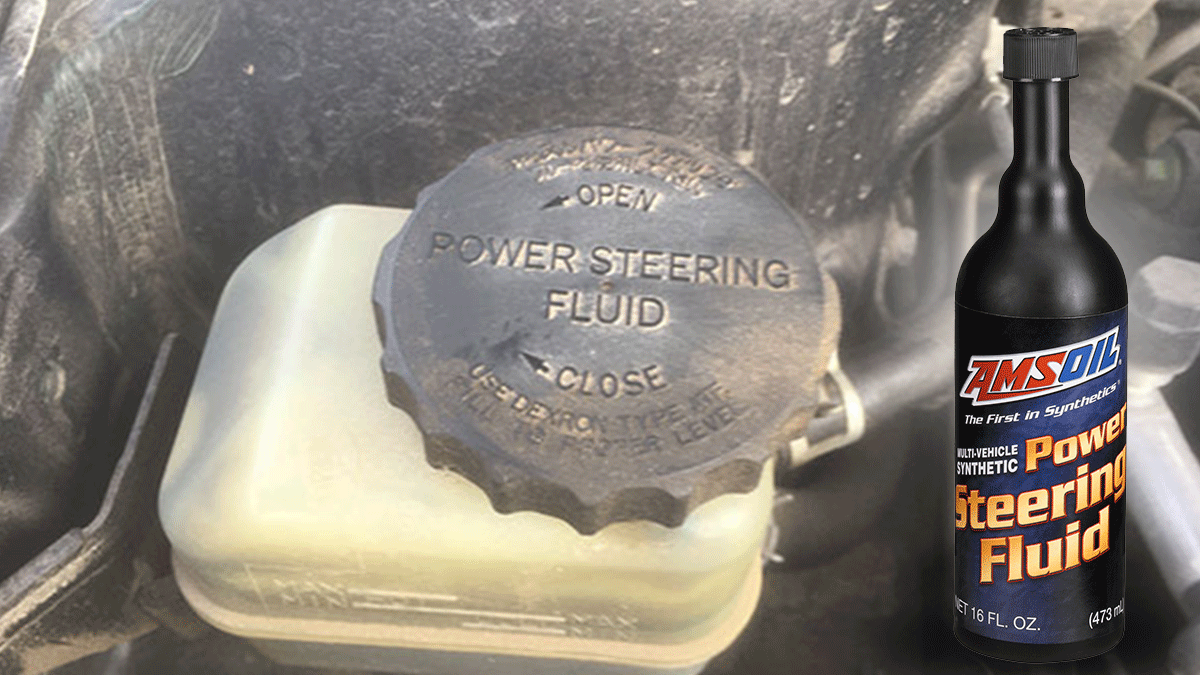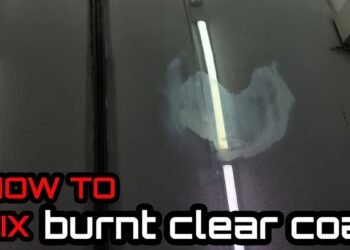If you’ve ever noticed power steering fluid spilled on your engine, you know it can be a real headache. That oily mess not only looks bad but can also attract dirt, cause unpleasant smells, and even damage engine parts over time.
You want your engine bay clean and running smoothly, right? Cleaning power steering fluid off your engine might seem tricky, but with the right steps and products, you can tackle it yourself quickly and effectively. In this guide, you’ll discover simple, proven methods to remove power steering fluid stains safely—so your engine stays spotless and your car stays in top shape.
Keep reading to learn how to get that stubborn fluid off your engine without hassle!
Tools And Materials Needed
Cleaning power steering fluid off an engine requires the right tools and materials. Using proper supplies makes the job easier and safer. Prepare everything before starting to avoid delays or mistakes. Gather cleaning products, protective gear, and optional tools for best results.
Essential Cleaning Supplies
Start with a strong degreaser designed for automotive use. It breaks down oily power steering fluid effectively. Use a soft brush to scrub the affected areas gently. Clean, lint-free rags help wipe away loosened fluid and residue. Have a spray bottle filled with water to rinse the surface after cleaning.
Protective Gear
Wear gloves to protect your hands from chemicals and dirt. Safety goggles keep your eyes safe from splashes. Use old clothes or a protective apron to avoid stains on your clothing. Ensure good ventilation if working indoors to avoid inhaling fumes.
Optional Equipment
A small vacuum or wet/dry shop vac helps remove excess liquid quickly. A plastic scraper can lift dried or thickened fluid without damaging the engine. Compressed air can blow away dirt from hard-to-reach spots. A power washer with low pressure is useful for a final rinse but handle with care to avoid damaging engine parts.

Credit: www.amazon.com
Initial Cleanup Steps
Cleaning power steering fluid off an engine starts with quick and careful action. The fluid can cause damage or attract dirt, so removing it fast is key. Follow simple steps to handle the spill safely and effectively.
Absorbing Excess Fluid
Use absorbent materials like rags or paper towels to soak up the fluid. Press gently to avoid spreading the spill further. For large spills, use cat litter or sawdust to absorb the liquid. Let it sit for a few minutes, then sweep or scoop it away. This helps prevent the fluid from seeping into engine parts.
Preventing Spread Of Fluid
Place rags or barriers around the spill area to stop the fluid from moving. Avoid using water at this stage, as it can spread the fluid. Clean tools and hands before touching other parts of the engine. Keep the engine off to reduce heat and avoid fluid evaporation or burns. Early control limits damage and makes cleanup easier.
Effective Cleaning Agents
Removing power steering fluid from an engine requires effective cleaning agents. These agents break down the oily residue quickly. They help restore the engine’s clean look without damage. Choosing the right cleaner depends on the spill’s size and surface type. Some cleaners work better on metal, while others suit rubber or plastic parts.
Strong Degreasers
Strong degreasers are powerful and fast-acting. They dissolve thick layers of power steering fluid with ease. These degreasers remove grease and oil without scrubbing hard. Use a brush or spray bottle for better coverage. After application, rinse with water to clear residues. Always wear gloves to protect your skin from chemicals.
Solvent-based Cleaners
Solvent-based cleaners break down power steering fluid at the molecular level. Common solvents include mineral spirits and brake cleaner. They evaporate quickly, leaving no sticky residue behind. These cleaners are great for tight spots and engine crevices. Apply carefully to avoid harming sensitive engine components. Good ventilation is important when using solvents.
Household Soaps And Detergents
Household soaps and detergents offer a gentle cleaning option. Dish soap mixed with warm water cuts through light fluid stains. This method is safe for all engine parts and easy to use. It may require repeated application for tough stains. Use a soft cloth or sponge to avoid scratching surfaces. This option is budget-friendly and readily available at home.

Credit: www.youtube.com
Cleaning Techniques
Cleaning power steering fluid off an engine requires careful steps. The right techniques remove grease and prevent damage to engine parts. This section covers three key cleaning techniques to restore your engine’s cleanliness quickly and safely.
Applying Degreaser And Solvents
Start by choosing a quality degreaser suitable for automotive use. Spray it evenly on the affected areas. Let it sit for a few minutes to break down the fluid and grime. For tougher stains, use solvent-based cleaners like mineral spirits or brake cleaner. These dissolve stubborn power steering fluid deposits effectively. Always work in a well-ventilated area and avoid direct contact with skin.
Scrubbing Methods
Use a soft brush or sponge to scrub the degreaser-treated spots gently. Focus on crevices where fluid tends to collect. Avoid harsh scrubbing that might damage sensitive engine parts. For larger spills, a stiff brush helps lift dirt and fluid residues. Reapply degreaser if needed during scrubbing to maintain cleaning power.
Rinsing And Drying
Rinse the engine area with low-pressure water to wash away loosened grime and degreaser. High-pressure water can force moisture into electrical parts, so use caution. After rinsing, dry the engine surface with clean microfiber towels. Let the engine air dry fully before starting your vehicle to prevent short circuits or corrosion.
Handling Stubborn Stains
Power steering fluid can leave tough stains on your engine. These stains do not come off easily with simple cleaning. Stubborn stains need extra care and effort to remove completely.
Using the right methods helps protect your engine from damage. It also keeps your engine looking clean and well-maintained. Below are some effective ways to handle these difficult stains.
Repeated Treatments
Applying cleaner once may not remove the stain fully. Repeat the cleaning process several times for best results. Let the cleaner sit on the stain for a few minutes each time. This breaks down the fluid and lifts it from the surface.
Use a soft brush to scrub gently between treatments. Avoid harsh scrubbing that might damage the engine parts. Patience is key to removing deep stains.
Using Absorbent Poultices
Absorbent poultices draw out the fluid from the stain. Materials like cat litter, cornstarch, or sawdust work well. Spread a thick layer of the material over the stained area.
Leave it to absorb the fluid for several hours or overnight. After absorption, sweep or vacuum the material away. This method helps remove fluid trapped deep in engine crevices.
Surface-specific Tips
Cleaning power steering fluid from various surfaces requires different approaches. Each surface reacts differently to cleaning agents and methods. Knowing the right steps protects the surface and removes the fluid effectively.
Engine Components
Use a degreaser designed for engines. Spray it gently on the affected area. Avoid soaking sensitive parts like electrical connections. Let the degreaser sit for a few minutes. Wipe with a clean cloth or brush softly. Rinse carefully with low-pressure water. Dry the engine with a microfiber cloth. This prevents corrosion and keeps the engine safe.
Concrete Surfaces
Apply an absorbent like cat litter or sawdust to soak excess fluid. Let it sit for several hours. Sweep the absorbent away and discard it properly. Use a strong degreaser or concrete cleaner next. Scrub the area with a stiff brush. Rinse thoroughly with water. Repeat if stains persist. This method lifts deep stains without damaging concrete.
Carpets And Upholstery
Blot the spill immediately with paper towels. Do not rub to avoid spreading the stain. Sprinkle baking soda or cornstarch to absorb fluid. Let it rest for 30 minutes. Vacuum the powder completely. Use a mild detergent mixed with water. Gently scrub the stained area with a soft brush. Rinse with a damp cloth and air dry. This keeps fabrics clean without harsh chemicals.
Safety Precautions
Handling power steering fluid requires care to avoid harm and damage. Safety precautions protect you and the engine during cleaning. Follow these simple steps to keep the process safe and effective.
Ensuring Proper Ventilation
Work in a well-ventilated area to avoid inhaling fumes. Open doors and windows for fresh air flow. Use fans to help move air if indoors. Good ventilation prevents breathing in harmful chemicals from the fluid or cleaners.
Using Protective Equipment
Wear gloves to protect your skin from contact with the fluid. Use safety goggles to shield your eyes from splashes. Wear old clothes or a protective apron to avoid stains. Protecting your body reduces the risk of irritation or injury.
Disposal Of Waste Materials
Collect used rags and fluids carefully. Do not pour power steering fluid down drains or on the ground. Dispose of waste at approved recycling or hazardous waste centers. Proper disposal keeps the environment safe and prevents pollution.
Preventing Future Spills
Preventing future spills of power steering fluid on your engine helps keep your car clean and running smoothly. Spills can cause damage and make your engine messy. Taking simple steps stops spills before they happen. This saves time and money on repairs. Follow easy habits to keep your engine free of fluid leaks and spills.
Checking For Leaks
Regularly inspect your power steering system for leaks. Look under the car and around the engine bay. Check hoses and connections for cracks or wet spots. Catching leaks early stops fluid from spilling onto the engine. Use a clean cloth to wipe areas and spot fresh leaks. Fix leaks quickly to avoid bigger problems.
Proper Fluid Handling
Pour power steering fluid carefully to prevent spills. Use a funnel when adding fluid to the reservoir. Avoid overfilling, which can cause overflow and leaks. Clean any spilled fluid immediately with a rag or absorbent material. Store fluid containers tightly closed and upright. Proper handling keeps the engine bay clean and safe.
Regular Maintenance
Schedule routine maintenance for your power steering system. Change fluid as recommended by your vehicle’s manual. Replace worn hoses and seals before they fail. Regular checks ensure the system works well and prevents leaks. Maintaining your power steering system protects your engine from spills and damage.

Credit: blog.amsoil.com
Frequently Asked Questions
How To Clean Up Power Steering Fluid Off Engine?
Blot excess fluid with absorbent material like cat litter. Apply engine degreaser and scrub gently. Rinse thoroughly with water. Repeat if needed.
What Dissolves Power Steering Fluid?
Strong degreasers, mineral spirits, brake cleaner, or absorbents like cat litter and cornstarch dissolve power steering fluid effectively.
What Happens If I Spill Power Steering Fluid On My Engine?
Spilling power steering fluid on your engine can cause slippery surfaces and attract dirt. Clean spills quickly using absorbents and degreasers to prevent damage and odors.
How To Remove Power Steering Fluid From Car?
Absorb excess power steering fluid with cat litter or cornstarch. Apply a strong degreaser or dish soap. Scrub gently, then rinse thoroughly. Repeat if stains persist. Use solvent cleaners like mineral spirits for tough spots. Always clean spills promptly to prevent damage.
How Do I Clean Power Steering Fluid Off My Engine?
Use a degreaser spray, let it sit, then gently rinse with water. Repeat if needed.
Conclusion
Cleaning power steering fluid off your engine keeps your car safe and running well. Act quickly to absorb the spill using materials like cat litter or cornstarch. Use a strong degreaser to break down the oily residue. Rinse gently with water to remove cleaner leftovers.
Regularly checking and fixing leaks prevents future messes. A clean engine looks better and avoids damage. Take time to maintain your vehicle properly. Simple steps make a big difference in engine care.

















